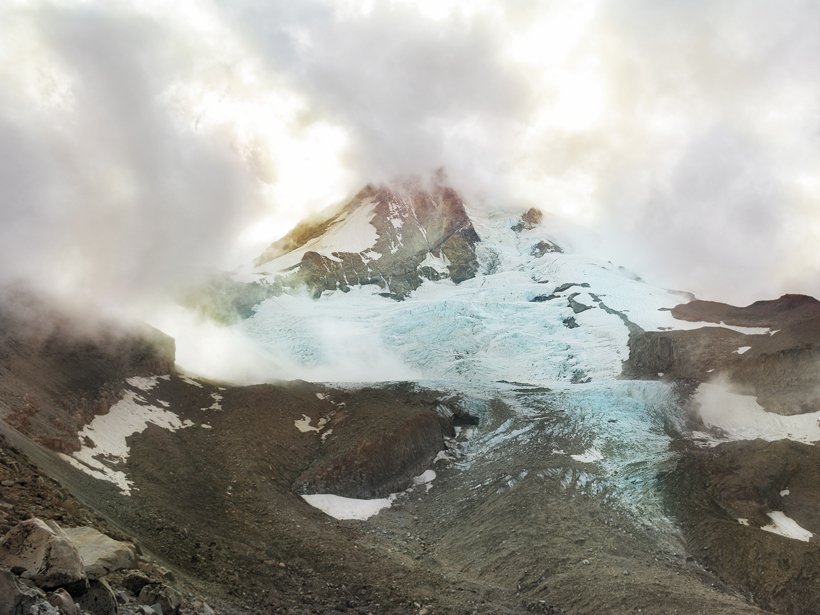Ice sheets play a critical role in sea level changes, but modern observational data for sea level and ice sheet mass balance exist for, at most, only the last century. Because of the abbreviated record, projections of future sea levels from Earth’s remaining ice sheets are uncertain.
The geologic record serves as a valuable archive of ice sheet and sea level change in response to past climate variability. Therefore, the geologic record, also known as the paleorecord, is an important resource for assessing the relationship between ice sheets, sea level, and climate change and plays an important role in projecting future sea level rise.
Discussion at the workshop focused on merging the paleorecord with modern-day instrumental records.
To discuss how to link the paleorecord with contemporary data, the fourth meeting of the Paleo Constraints on Sea Level Rise 2 (PALSEA2) working group convened on Mount Hood, Ore., in September 2016. Discussion at the workshop focused on merging the paleorecord with modern-day instrumental records, quantifying uncertainties in sea level records, constraining past ice sheet sources and rates of meltwater input to the ocean, and coupling between instrumental and theoretical sea level reconstructions.
Coastal marshes are important archives of sea level change because they can be used to reconstruct past sea levels in locations all over the world. Discussion at the PALSEA2 workshop emphasized the importance of determining the uncertainties in marsh-based relative sea level (RSL) records and standardizing how these uncertainties are reported. In particular, the meeting highlighted Bayesian statistics as a powerful tool for quantifying temporal and vertical uncertainties in sea level records from marsh deposits.
Reconstructions of past thickness and extent of ice sheets are useful for deriving sources of meltwater and understanding ice sheet stability. Several presentations at the PALSEA2 workshop focused on model- and data-based ice sheet reconstructions of Greenland, the Laurentide Ice Sheet, and Antarctica, emphasizing the implications of these reconstructions for meltwater budgets during the last deglaciation. Additionally, modern instrumental data from the Greenland and Antarctic ice sheets were discussed in an attempt to bridge modern understanding of ice sheet dynamics with the paleorecord and constrain missing meltwater sources identified in the modeling community. Field data and models still do not fully agree on these meltwater budgets, and the community agreed to prioritize this issue moving forward.
Participants discussed plans for the development of an accessible database to report relative sea level data in a standardized format.
Meeting participants discussed directions for future work that involve improving the quantification of uncertainties in marsh and coral records, developing new proxies that can be used to build records of past sea levels, improving glacial isostatic adjustment (GIA) models, and developing new RSL records in regions with sparse data coverage. Additionally, participants discussed plans for the development of an accessible database to report RSL data in a standardized format. Such a database would facilitate collaborations between the field scientists who develop RSL records and the GIA modelers and statisticians who help to interpret them. The combination of these different approaches would allow the sea level community to better quantify and reduce uncertainties in sea level records and projections.
Further information about the meeting, a list of participants, and presentation abstracts can be found on the meeting’s website.
Acknowledgments
We thank the organizers of the PALSEA2 workshop, namely, Anders Carlson, Andrea Dutton, and Glenn Milne, as well as the funding organizations: the Department of Geological Sciences at the University of Florida, the International Union for Quaternary Science, and the Past Global Changes (PAGES) project.
—Elena Steponaitis (email: [email protected]), Department of Earth and Environmental Sciences, Tulane University, New Orleans, La.; Anastasia G. Yanchilina, Weizmann Institute of Science, Rehovot, Israel; and Heather D. Bervid, College of Earth, Ocean, and Atmospheric Sciences, Oregon State University, Corvallis
Citation:
Steponaitis, E., A. G. Yanchilina, and H. D. Bervid (2017), Reconstructing past sea level change to understand the future, Eos, 98, https://doi.org/10.1029/2017EO072403. Published on 04 May 2017.
Text © 2017. The authors. CC BY 3.0
Except where otherwise noted, images are subject to copyright. Any reuse without express permission from the copyright owner is prohibited.

